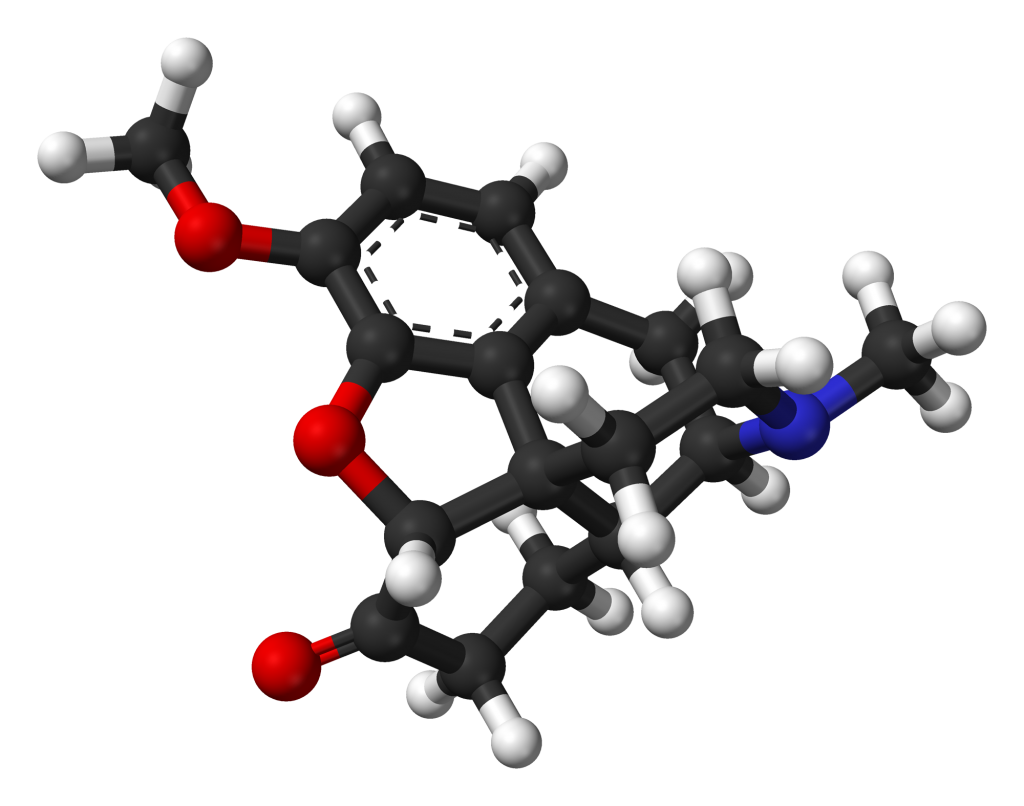Auxiliary Label: Working to build better opioids

By Christian Ruiz
Auxiliary Label Staff
Opioids are a class of highly addictive pain-relieving drugs derived from the opium in poppy plants. These drugs are at the center of today’s opioid-overdose crisis, in which at least 115 people per day in the United States die after opioid overdoses.
If you have ever had your wisdom teeth removed, you might be familiar with opioid drugs that are not available over the counter but are prescribed by your doctor or dentist: Percocet (oxycodone/acetaminophen), Vicodin (hydrocodone/acetaminophen) or Tylenol No. 3 (codeine with acetaminophen). The widespread availability of these and similar drugs have caused many people to become addicted to opioids.
At least 33,000 people in this country died in 2015 alone from overdosing on opioids. Overall, misuse of opioid drugs has cost the United States $78.5 billion per year, including the costs of healthcare, lost productivity, addiction treatment and legal system involvement.
However, the major FDA-approved treatments for opioid abuse and addiction — methadone (Dolophine, Methadose), buprenorphine (Belbuca, Buprenex), naloxone (Narcan) and naltrexone (Vivitrol) — are not fully effective in treating opioid abuse and addiction. They have many of the side effects that the opioids themselves have, such as mood disorders.
For several years, Yan Zhang, Ph.D., and his laboratory in VCU School of Pharmacy’s Medicinal Chemistry Department have been working on modifying the chemical structures of drugs used to treat opioid abuse and addiction. In doing so, they hope to reduce the opioids’ addictive potential and their other harmful side effects such as sedation, decreased ability to breathe and constipation.
To do this, they use organic chemistry to synthesize these potential new drugs and then use biochemical techniques to examine how these drugs interact with different, specific proteins in cells.
Proteins: More Than Just for Bodybuilding
To understand how Zhang and his team are working to build better, safer opioids, we need to take a step back and talk about proteins.
Proteins are large molecules that are responsible for many survival functions in the human body. For example, they protect the body against viruses and bacteria, speed up chemical reactions within cells, and provide structure and support for cells. An important function that proteins play, particularly in terms of many drugs and their actions, is to relay biological messages throughout the body.
In essence, the way most drugs work is by binding to these receptor proteins (proteins that “receive” these drugs), which causes these proteins to send biochemical or electrical signals throughout the cells in the body. These signals in turn tell the body to reduce inflammation, relieve a headache or even decrease heart rate, for example.
G protein-coupled receptors are a superfamily of these receptors; opioids bind to a specific group within this superfamily of receptors, called opioid receptors.
The three major types of opioid receptors are named for the Greek letters mu, kappa and delta. For simplicity, these opioid receptors often are abbreviated MOR, KOR and DOR.
The mu opioid receptor, or MOR, is primarily responsible for relaying signals causing pain relief. The KOR is primarily responsible for relaying signals causing depression and anxiety. The DOR is primarily responsible for relaying signals causing mood-related disorders.
Notably, several studies have shown that the MOR is responsible for relaying other signals, particularly the addictive potential and other harmful side effects of opioids mentioned previously.
These effects on mood are due to opioids’ interactions with the KOR and/or the DOR rather than just the MOR.
Hence, selectively blocking only the MOR should be able to block the signals for addiction, sedation, constipation and the other side effects without relaying the signals for mood disorders caused by interacting with the KOR and/or the DOR. This could mean new treatments for opioid addiction could be developed that avoid these unpleasant side effects.
With this hypothesis in mind, Zhang’s laboratory group is working on producing new chemical compounds that selectively target the MOR without targeting the KOR and the DOR. After synthesizing these potential, new drugs, the group uses a series of biochemical tests to examine these drugs’ abilities to bind to and to relay biological messages through the MOR, the KOR and the DOR.
Through their hard work, we might one day have a drug to more effectively help those in need during this opioid-overdose crisis.
Auxiliary Label is a student-created blog examining pharmacy life, education and research at the VCU School of Pharmacy from a student perspective. It is overseen by Greg Weatherford, the school’s director of communications. Contact him here.
Categories Auxiliary Label, Research, Student news